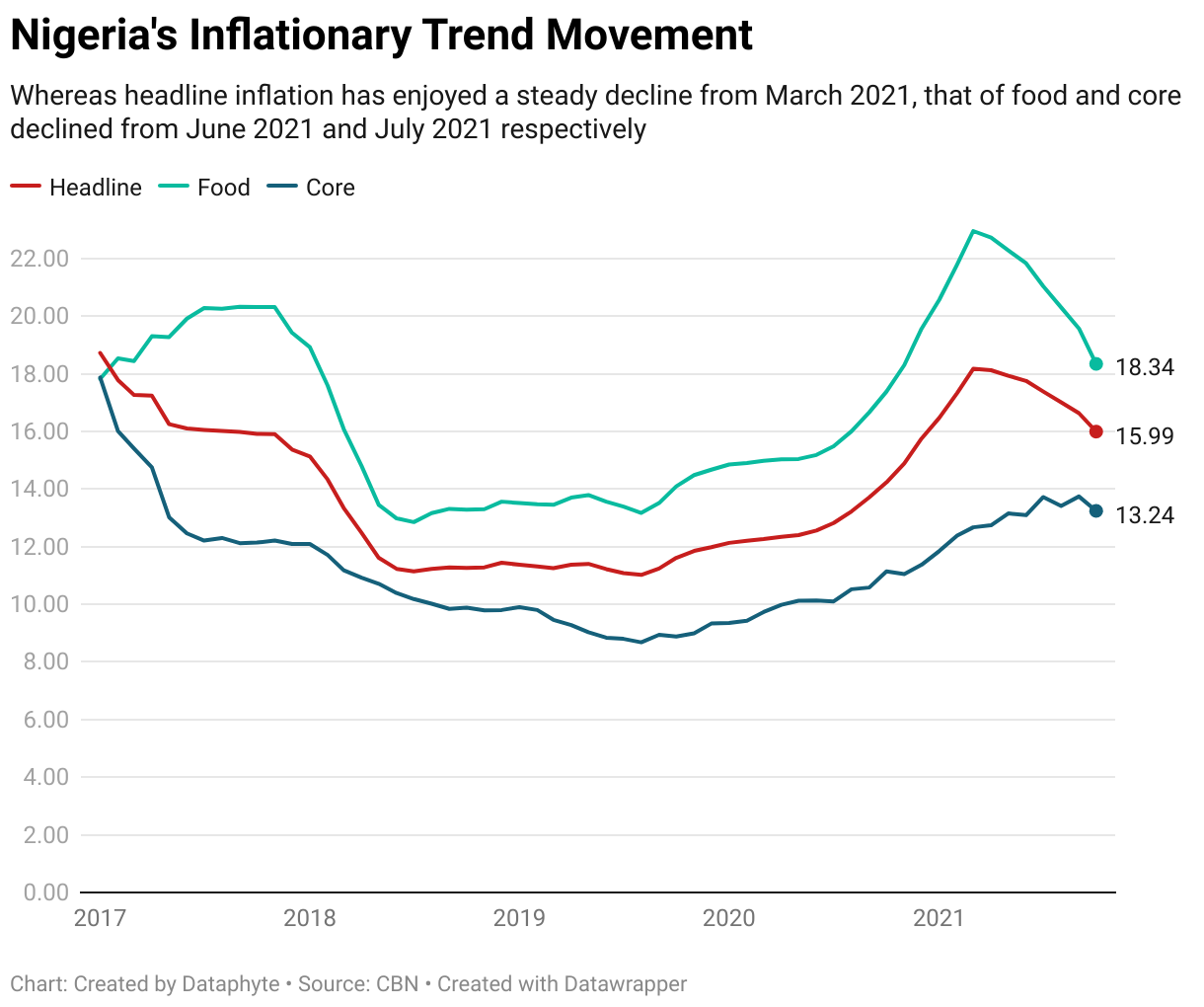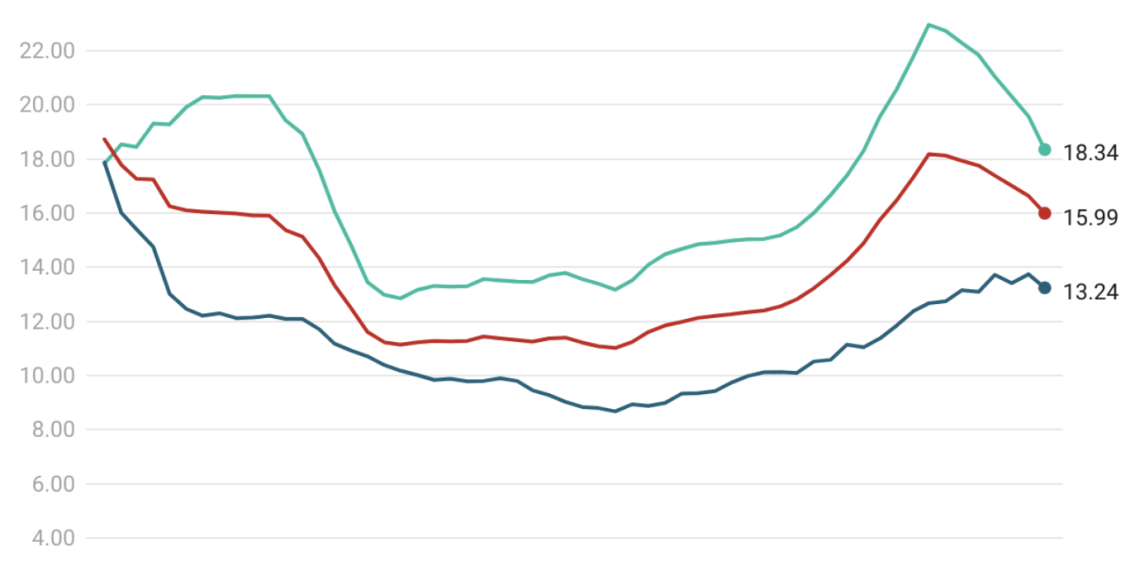Nigeria’s inflation rate [Consumer Price Index (CPI)] continues its steady decline across all headings. Headline inflation declined for the eighth consecutive month from 16.63% in September to 15.99% in October.
Food inflation had a consecutive four-month decline while core inflation declined in the last period. In the final phase, food inflation dropped from 19.57% in September to 18.34% in October. At the same time, core inflation declined from 13.74% to 13.24% in the same period.
However, the continuous CPI decline recorded in the country has failed to reflect actual economic realities. An earlier Dataphyte report shows how prices of goods and services continue to increase across the country despite the decrease in inflation rates in September.

CPI remains a core economic indicator that measures the inflation rates across the country. This rate has a significant impact on the financial markets. Thus, whether the figure is high or low affects current and potential investment in the country.
The CPI is released monthly and followed keenly by economists and analysts alike, giving figures of inflation changes with inherent weakness. Thus, a decline in the inflation rates does not always mean a reduction in the nominal prices of goods and services.
A fall in inflation rates does not mean that prices have gone down. It means prices are increasing just at a lesser rate than the last time inflation was measured.
Why the Variation
Reports have shown how purchasing patterns have effects on CPI measurement. CPI is usually measured using the average price changes of baskets of goods and services. Usually, these price baskets are in urban areas; thus, the changes in rural and suburban areas are not reflected.
So, inflationary changes that result from these average basket price changes give an artificial picture of economic realities. Tracking inflation through fixed price changes of baskets of goods and services primarily does not reflect the actual high cost of living.
Therefore, as is the experience in Nigeria, prices of goods and services have increased while inflation rates have changed.
CPI does not track changes in purchasing patterns. Therefore, when people change their consumption pattern by buying less of those goods basket for whom prices have risen, the CPI measure for inflation records a decline whereas prices have increased. The final inflation figure reported from these estimated changes will understate the actual cost of living due to substitution bias in purchasing.
The CPI measurement of fixed price baskets also fails to capture new innovative goods. Businesses have developed the practice of introducing new varieties of products. But the CPI measure does not record these new varieties as it measures price changes in traditional baskets of goods and services. This variety bias leads to an understatement or overstatement of inflationary trends.
Goods and services baskets have continuous changes in quality. This quality bias can either be an improvement on what’s available or a drop in quality due to the increasing cost of production. These changes are not reflected in CPI measurements as CPI is a constant quality index.
Therefore, although inflation rates in Nigeria have continued to decline over the last couple of months, nominal prices of goods and services have continued to soar due to these biases not being taken into account in computing the CPI.
As inflation continues to decline in Nigeria, the cost of living does not reflect a corresponding decline.



